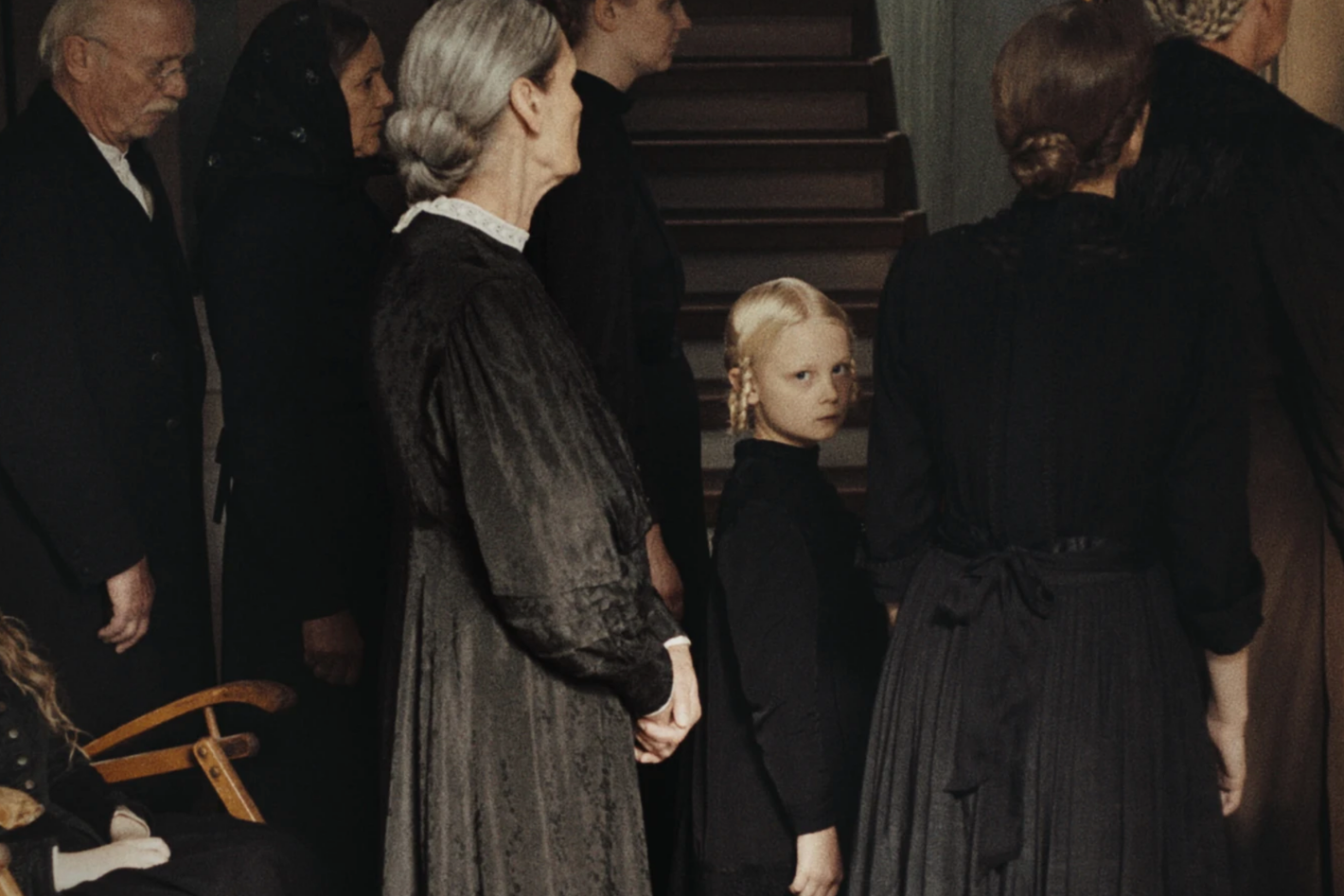We May Have Already Seen the Best Film at Cannes This Year


There are maids on the farm where Alma (Hanna Heckt), one of the quartet of main characters in Sound of Falling, is growing up — women in uniform who bustle around the house and the grounds. For Alma, a little girl with a solemn face and white-blonde braids, they’re as much a fixture of her home as her family members, and when she recounts certain brutal realities about their lives in voiceover, she does so with a matter-of-factness that makes them even more shocking. Understood to be sexually available to the men on the farm, the maids have been made “safe” by a specialist in the village who renders them infertile. Alma has accepted this information the way a child does, turning it over and over in her mind, not yet grasping the implications. Then a twist of fate and tragedy casts the subhuman nature of this treatment in a fresh light, and Alma, with a terrible new understanding, does what grown women for time immemorial have done. She describes the incident with a euphemism, understanding that the social fabric is actually a polite fiction she’s expected to help maintain.
Sound of Falling, the second film from Berlin-born writer-director Mascha Schilinski, could be described as a multi-voiced account of the secret history of women on a farm in the Altmark, a rural part of Germany flanked by the Elbe. It’s an astonishing work, twining together the lives of four generations of families with an intricacy and intimacy that feels like an act of psychic transmission. And it has started this year’s Cannes competition by setting a high-water mark that will be hard for another feature to reach. Encompassing a century, Sound of Falling’s earliest period is anchored to Alma, who was born toward the start of the 20th century. Erika (Lea Drinda) lives during the ’40s, when war extends a shadow over even her remote home, while Angelika (Lena Urzendowsky) exists in the ’80s in what has become East Germany. Lenka (Laeni Geiseler), the last of the protagonists, lives in a present day of paddleboards and AirPods, having moved to the farmhouse with parents doing their own DIY restoration. While momentous events unfold in the backdrop of most of these eras, the film places us in the perspective of characters who are children or teenagers, and whose accounts are immediate and personal. It’s a chorus of coming-of-age stories, though what that actually means, and what each of these young women remembers and prioritizes, is very much part of its point.
Fittingly, for a work about perspectives left out of the official record, Schilinski frequently makes you feel like she is carving out a new film language with Sound of Falling, one that’s impressionistic and sensual, but also so grounded in the experiences of its girls that it’s like being dropped directly into their heads. She expects the audience to go from disorientation to absorption as she hops through time, sometimes dwelling in a particular year for a longer stretch, and other times skipping more rapidly. It’s a challenge that reflects what her characters are going through as they learn the ropes of the world, which for some involves developing an awareness of mortality, and for others the desirability of their body, and for all, a growing sense of self. These episodes aren’t only defined by trauma, but also yearning, wonder, wistfulness, and joy; Sound of Falling’s tone can veer from the dreamy to the painfully sharp, its protagonists sometimes speaking in voiceover and other times turning the narration over to side characters. The beauty of its landscape provides an indifferent backdrop to events that can be very ugly, and Schilinski, while usually opting for shots that favor tangibility, sometimes creates tableaus that evoke the paintings or yellowed photographs that provide the only lasting actual visual evidence of each period.
When similarities start cropping up across the eras, they’re less about the universality of what we’re seeing on screen and more about how the past can reverberate across decades, especially when we like to pretend that change is quick or thorough. But there’s something mysterious about the movie’s slant rhymes, too, because there’s space left for them to evade specific symbolism. Two of the girls engage in elaborate fantasies of suicide intended to teach loved ones a lesson, and it’s an all-too-recognizable representation of that private urge for revenge via self-immolation. Two of their mothers across generations contend with involuntary reactions, one gagging, the other laughing, reflections on the ways our bodies can betray us. But what to make of the repeated murmuring of “warm,” once by a woman nuzzling her husband’s penis, once by a cousin touching the blood from a wound on Angelika’s bare foot, once by Erika as she curls into bed? It’s an effort, I think, to emphasize that these vivid fragments are all part of the strange tapestry of humanity the film weaves — one that’s so much richer, darker, and more complex than the narratives we end up speaking out loud.

Latest News
For Sale! 2016 Sea Ray 350 Sundancer – $180,000
Reel Deal Yacht is pleased to feature a meticulously maintained 2016 Sea...
Trump’s Acceptance of Qatari Plane May Present National Security Risks: NPR
The Controversial Gift: Qatar’s Offer of a Luxury Aircraft to Trump On...
Struggling Sergio Garcia says he’d decline playing for European Ryder Cup team right now if invited
Sergio Garcia has appeared in 10 Ryder Cups and amassed more points...
Arsenal secures return to Champions League on day of farewells for Everton and Vardy
Arsenal has sealed its place in next season’s Champions League. Nottingham Forest...
The NBA’s final 4 is set: Thunder, Knicks, Wolves and Pacers remain, and parity reigns again
The parity era continues in the NBA. The New York Knicks haven’t...














Leave a comment